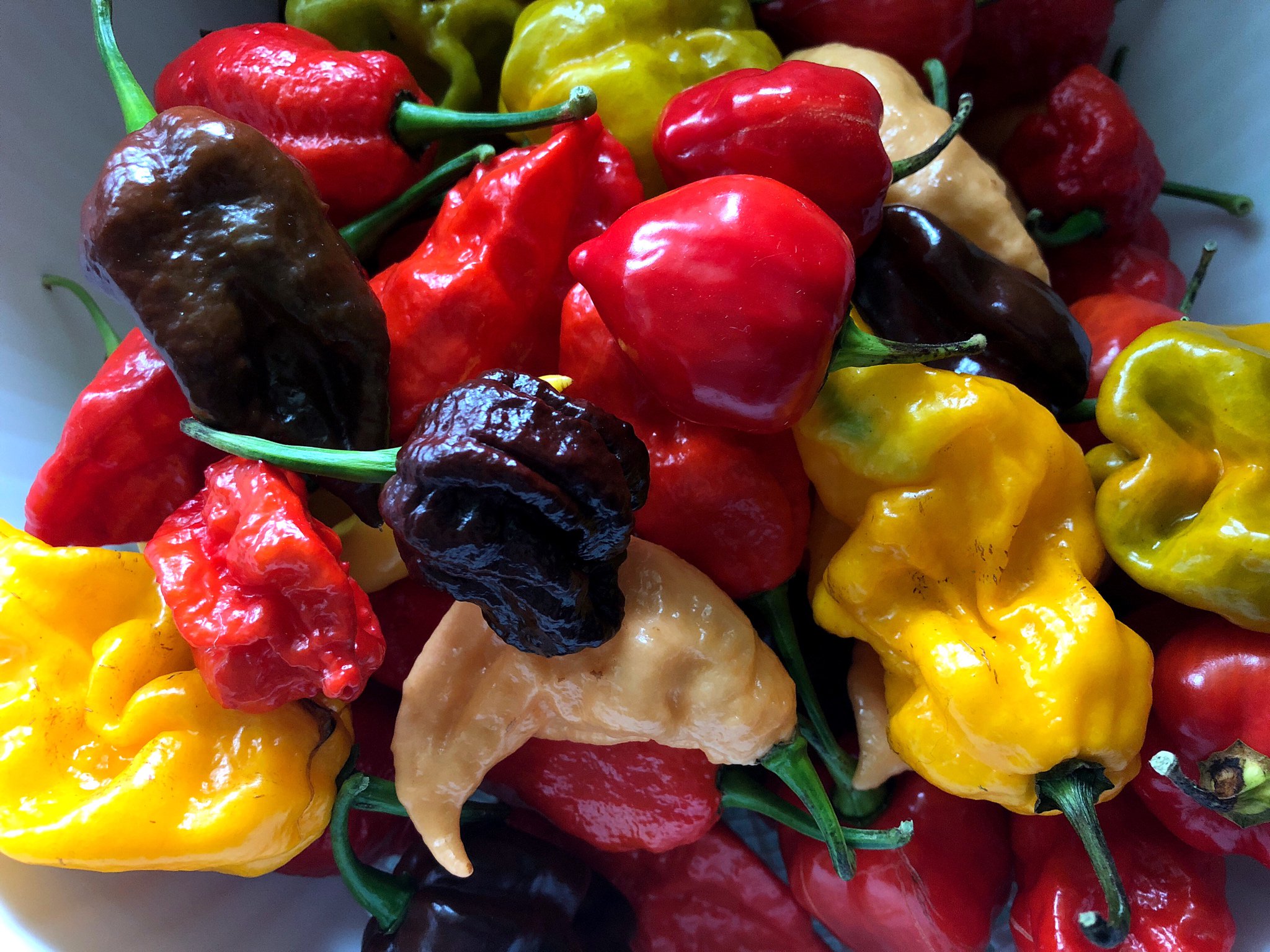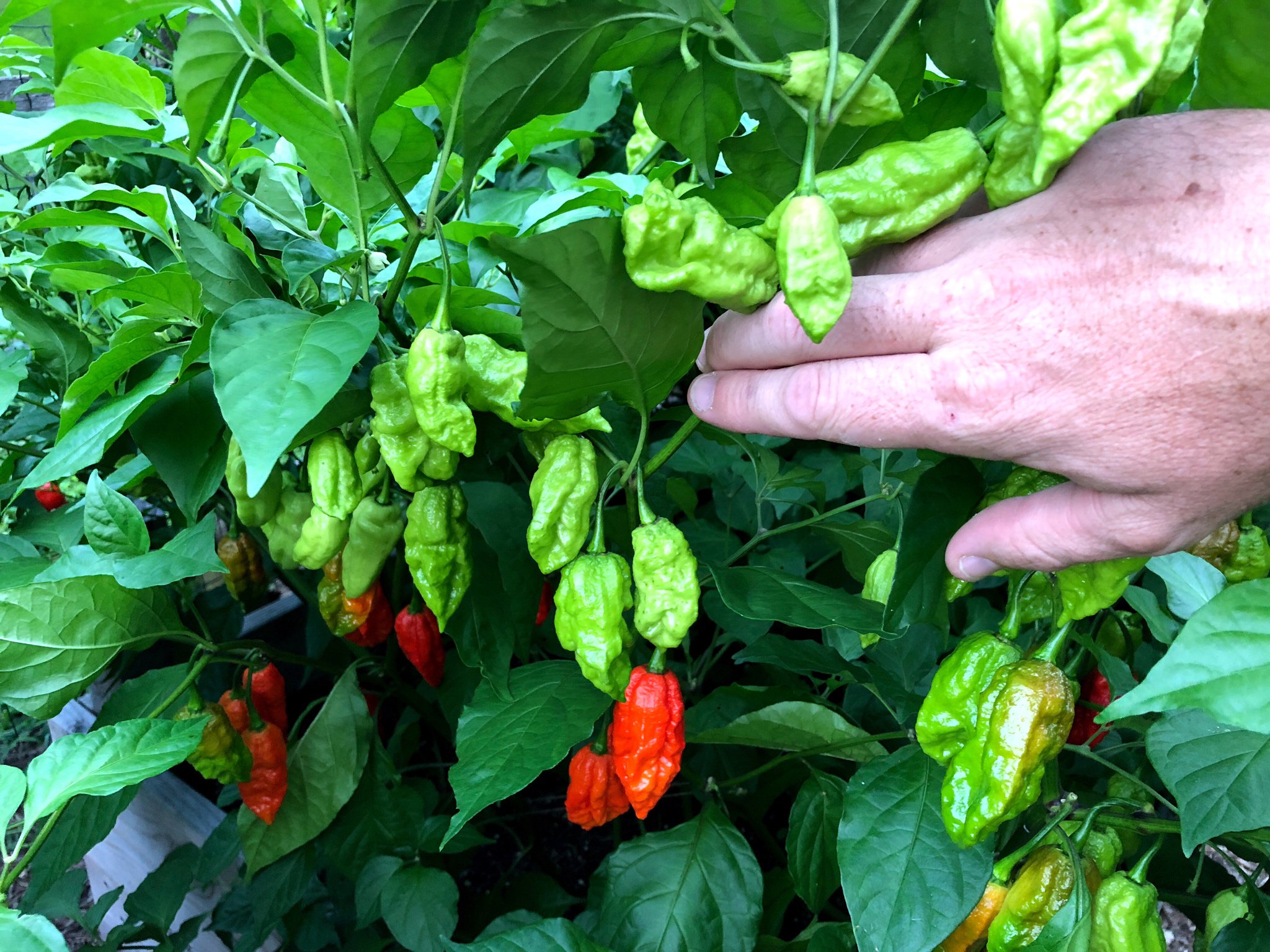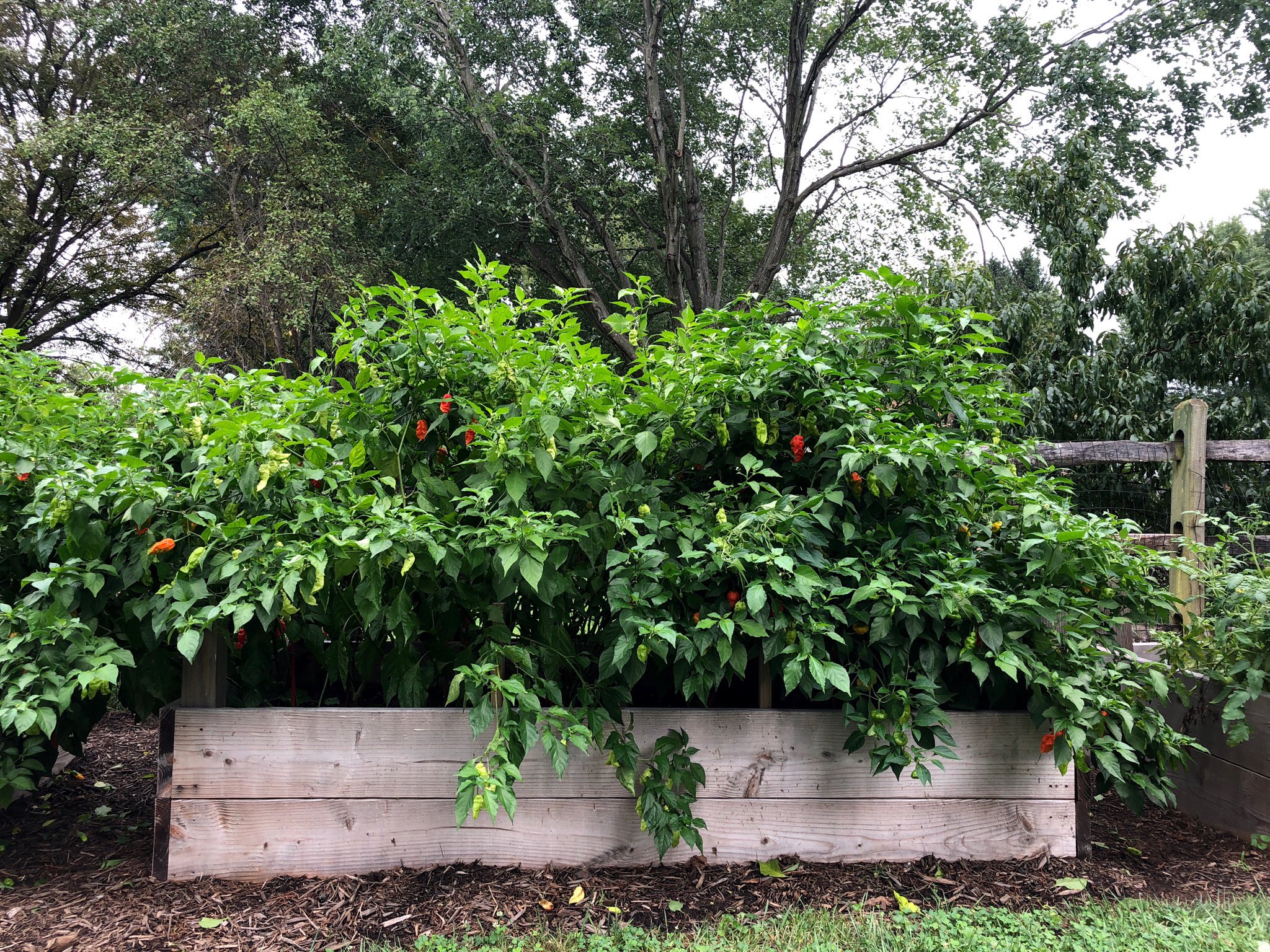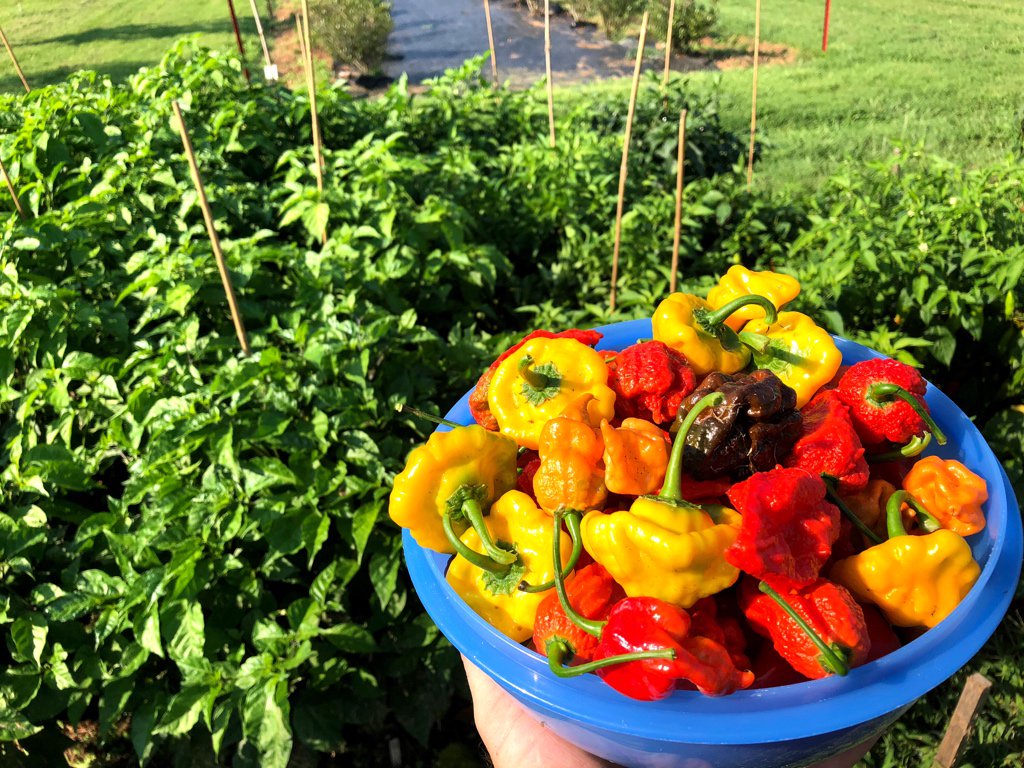Lessons Learned from the 2018 Pepper Season
Just after the end of the 2017 pepper season, I made the decision to expand my “operation” a bit. I restructured my sowing/grow light setup. I built raised beds for more plants at the home and I worked with a local community garden to get a chunk of land for the overflow plant that I would not be able to maintain at the house. By the time all was said and done, I managed 59 individual plants (encompassing 33 different varieties) and ultimately harvested roughly 5,166 pods (+/- several due to counting errors) before the season was shuttered.

Too Much
First things first. I knew that jumping from 25 or so plants in 2017 to almost 60 this year was going to be a major endeavor and though the original task of preparing beds and getting transplants into the ground took some effort, it really wasn’t all that bad in terms of managing them for the past several months. The issue, really, was the shear number of peppers that I have harvested. While my wife likes some spice, the silly amount of frozen pods in my freezer is a bit overwhelming for just one person.
I’ve shared fresh peppers, dried peppers and powder blends with friends, but again, I didn’t quite expect this much in terms of harvest. I know that some years are better than others and this one was quite bountiful. That said, I’ll be making some adjustments for 2019 with a smaller number of plants I plant to grow. I’m not going to cut back to far, maybe to 35 or so depending on how germination goes.
Trifecta+
For last years plants I didn’t really do much in-ground fertilization — some bone and blood meal along with a bit of epsom salts mixed in when first setting transplants. This year, I opted to test out MI Gardner’s Trifect+ product. I had see good reviews and production from several videos on-line and decided that I would take a chance. It’s hard to really call the outcome of its use a one-to-one comparison as most of the plants were in raised beds or in-ground, but I did see a marked difference in my self-watering buckets this year. The plants wree fuller with a healthier appearance and produced more fruit than last year — hell, the raised bed plants were overflowing with pods!

Raised Beds
While the raised beds went gangbusters this season, packing 12 plants into each one was made for some maintenance issues later in the season. The roots for all the plants (as evident once I finally pulled them at the end of the season) appeared to have plenty of room to expand throughout the beds. The problem really was the extremely dense canopy as the plants grew into one another, making it a pain in the ass to harvest and maintain pest control.

As you can see, the plants were spilling out of the beds. I was surprised that I didn’t encounter any cross pollination. To be on the safe side, I didn’t harvest any seeds from any of these plants. With all that in mind, my goal is to set just eight plants per bed. I’ll have three for peppers — the boss lady wants a couple for other veggies so I’ll be constructing more this fall — so that’s 24 pepper plants at home.
I also plan to skipping the buckets for next year, though I wouldn’t be surprised if one or two made an appearance for a special plant.
Overflow Plot
The plot at the community garden was a success. The plants flourished, producing just under half of all the pods that I collected this season. Again, like the raised beds, they were perhaps packed a bit too tightly so I’ll be giving the 2019 selections a bit more space between them. As you can see by the photo below, it was hard to make my way amongst the plants in order to maintain and pick. The canopy was incredibly dense.

And since I am reducing the number of total plants, some of the overflow plot will be set aside for herbs and such that my wife would like to grow. Basel, sage, rosemary and the like will fill in nicely there.
So that’s it for 2018 — well, except for the hydroponic plants. The expansion was most certainly a success, perhaps too successful and as always provided plenty of opportunity to learn for future seasons to come. I’ve already started formulating which plants I want to try and grow fro 2019.